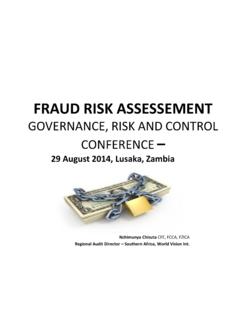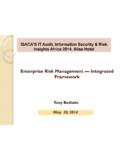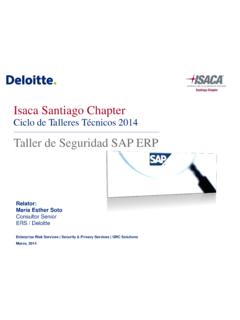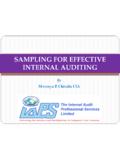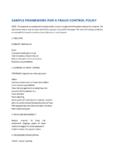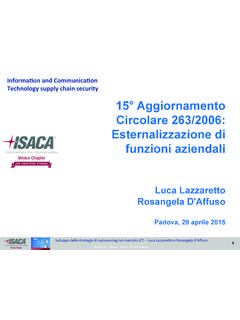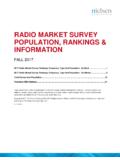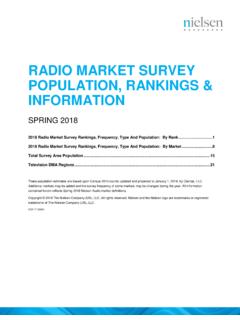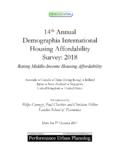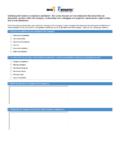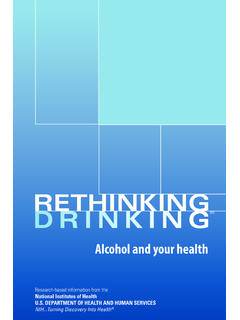Transcription of PHYSCIAL SECURITY SURVEY CHECKLIST - …
1 PHYSCIAL SECURITY SURVEY CHECKLIST PERIMETER BARRIERS TRANSIT FACILITIES Does a fence or other type physical barrier define the perimeter of the facility? (1) Specify type and height of physical barrier (2) Describe condition of physical barriers (3) Is perimeter barrier considered to be a SECURITY safeguard? (4) Is perimeter barrier set back 20 feet or more from transit facility property boundary? (5) Is perimeter barrier under surveillance at all times? If chain link fence is used as the perimeter barrier, (1) Is it constructed of #11 gauge or heavier wire? (2) Is mesh opening no larger than two inches square?
2 (3) Is selvage twisted and barbed at top and bottom? (4) Is bottom of fence extended into the ground? If masonry wall is used, (1) Is it at least seven feet high with a top guard of barbed wire or at least eight feet high with broken glass set on edge and cemented to top surface? (2) Do building walls, floors, or roofs form a part of the perimeter barrier? (3) Are all openings properly secured? NOTE: Openings, with an area of 96 square inches or greater, and located less than 18 feet above the level of the ground outside the perimeter barrier or less than 14 feet from controlled structures outside the perimeter barrier, should be provided with SECURITY equivalent to that of the perimeter.
3 If building forms a part of the perimeter barrier, (1) Does it present a hazard at the point of juncture with the perimeter fence? (2) Does it have any doors, windows, or other openings on perimeter side? If a river, lake or other body of water forms any part of the perimeter boundary, are additional SECURITY measures provided? Are openings such as culverts, tunnels, manholes for sewers and utility access, and sidewalk elevators which permit access to the facility secured? Describe the physical characteristics of each perimeter entrance. Are all entrance points in perimeter barriers guarded or secured? Are all perimeter gates of such material and installation as to provide protection equivalent to the perimeter barriers of which they are a part?
4 Are gates and/or other perimeter entrances which are not in active use frequently inspected by guards or other personnel? Is the SECURITY officer responsible for SECURITY of keys to perimeter entrances? Are keys to perimeter entrances issued to other than facility personnel such as contractor personnel? Are all normally used pedestrian and vehicle gates and other perimeter entrances lighted so as to assure: (1) Proper identification of individuals and examination of credentials (2) That interiors of vehicles are clearly lighted; and (3) That glare from luminaries is not in guard's eyes. Are appropriate signs setting forth the provisions of entry conspicuously posted at all principal entrances?
5 Are "No Trespassing" signs posted on or adjacent to perimeter barriers at such intervals that at least one sign is visible at any approach to the barrier for a minimum distance of 50 yards? Are clear zones maintained on both sides of the perimeter barrier? Are automobiles permitted to park against or close to perimeter barriers? Are lumber, boxes, or other materials allowed to be stacked against, or in close proximity to, perimeter barriers? Do guards patrol perimeter areas? Do guards observe and report insecure factors related to perimeter barriers? Is an interior all-weather perimeter road provided for the use of guard patrol cars?
6 If so, what is the condition? Are perimeters protected by intrusion alarm devices? PROTECTIVE LIGHTING. Is the perimeter of the installation protected by lighting? Does protective lighting provide a means of continuing during the hours of darkness the same degree of protection available during the daylight hours? Are the cones of illumination from lamps directed downward and away from the facility proper and away from guard personnel? Are lights mounted to provide a strip of light both inside and outside the fence? Is perimeter lighting used so that guards remain in comparative darkness? Are lights checked for proper operation prior to darkness?
7 Are repairs to lights and replacement of inoperative lamps effected immediately? Do light beams overlap to provide coverage in case a bulb burns out? Is additional lighting provided at active gates and points of possible intrusion? Are gate guard shacks provided with proper illumination? Are light finishes or stripes used on lower parts of buildings and structures to aid guard observation? Does the facility have a dependable source of power for its lighting system? Does the facility have a dependable auxiliary source of power? Is the protective lighting system independent of the general transit facility lighting or power system?
8 Is the power supply for lights adequately protected? Is there provision for standby or emergency lighting? Is the standby or emergency equipment tested frequently? Is emergency equipment designed to go into operation automatically when needed? Is wiring for protective lighting properly mounted? (1) Is it in tamper-resistant conduits? (2) Is it mounted underground? (3) If above ground, is it high enough to reduce possibility of tampering? Are switches and controls properly located, controlled, and protected? (1) Are they weatherproof and tamper-resistant? (2) Are they readily accessible to SECURITY personnel?
9 (3) Are they located so that they are inaccessible from outside the perimeter barrier? (4) Is there a centrally located switch to control protective lighting? Is adequate lighting for guard use provided on indoor routes? Are materials and equipment in shipping and storage areas properly arranged so as not to mask SECURITY lighting? PROTECTIVE ALARMS. If an alarm system is used in the facility, what detection device is used? (1) Is it a local alarm system? (2) Is it a central station system? (a) Is it connected to facility guard headquarters? (b) Is it connected directly to a headquarters outside the facility proper?
10 Is it a private protection service? Police station? Fire station? Is the system backed up by properly trained, alert guards? Is the alarm system for active areas of structures turned off during operational hours? Is the system tested prior to activating it from nonoperational periods? Is the alarm system inspected regularly? Is the system tamper-resistant? Weatherproof? Is an alternate alarm system provided for use in the event of failure of the primary system? Is an alternate or independent source of power available for use on the system in the event of power failure? Is the emergency power source designed to cut in and operate automatically?
